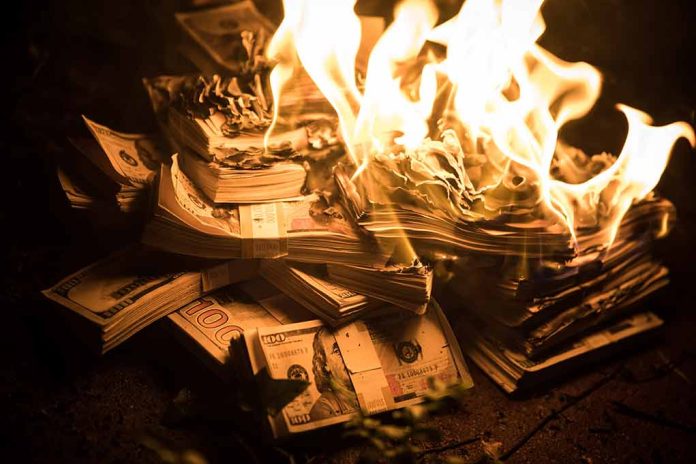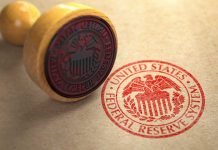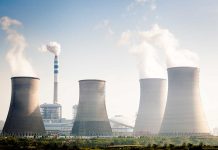
Buckle up, patriots! We’re about to dive into the wild world of financial bubbles, where dreams of endless riches meet the harsh reality of economic gravity. You might be thinking, “Why should I care about some Wall Street mumbo-jumbo?” Well, let me tell you, understanding these market phenomena is crucial for protecting your hard-earned cash and spotting the next big crash. So, grab your favorite beverage, settle in, and let’s explore the anatomy of financial bubbles – because knowledge is power, and in this case, it might just save your wallet.
The Five Stages of a Financial Bubble
Financial bubbles are not just random events; they follow a predictable pattern. Economist Hyman Minsky identified five stages that occur in almost every bubble: displacement, boom, euphoria, profit-taking, and panic. Let’s break these down and see how they’ve played out in history.
Stage 1: Displacement
The first stage of a bubble is triggered by a displacement – a new paradigm that captures investors’ imagination. This could be a technological breakthrough, like the internet in the 1990s, or a financial innovation, such as mortgage-backed securities in the 2000s. The current rise of AI could also be considered a displacement.
Stage 2: Boom
As more investors pile in, prices begin to rise. The boom phase is characterized by increasing momentum, growing media coverage, and a sense that “this time it’s different.”
“Irrational exuberance is the psychological basis of a speculative bubble” – Robert Shiller
Stage 3: Euphoria
During the euphoria stage, caution is thrown to the wind. Prices skyrocket, and investors justify ridiculous valuations with the belief that traditional metrics no longer apply.
Stage 4: Profit-taking
As the bubble reaches its peak, smart money begins to exit. Insiders and professional investors start selling their positions, sensing that the party can’t last forever.
“Figuring out when the bubble will burst isn’t easy; once it has burst, it will not inflate again.” – Investopedia
Stage 5: Panic
The final stage is characterized by a rush for the exits. As prices start to fall, fear replaces greed, and investors scramble to sell their assets at any price.
Historical Examples of Financial Bubbles
To truly understand bubbles, we need to look at some real-world examples. Let’s examine three infamous bubbles that shook the financial world.
The Dutch Tulip Mania (1634-1637)
Believe it or not, tulips once caused an entire economy to collapse. In the 17th century, tulip bulbs became a status symbol in the Netherlands, with prices reaching absurd levels.
“While it may seem absurd to suggest that a flower could bring down a whole economy, that is exactly what happened in Holland in the early 1600s.” – Investopedia
The Dot-Com Bubble (1995-2000)
The rise of the internet led to a speculative frenzy in tech stocks. Companies with no profits and questionable business models saw their valuations soar before crashing spectacularly.
“As the year 2001 ended, a good portion of the public dot-com companies had folded.” – Investopedia
The U.S. Housing Bubble (2000-2008)
Low interest rates and lax lending standards fueled a housing boom that ended in the worst financial crisis since the Great Depression.
“The U.S. housing bubble was a real estate bubble that affected more than half of the United States in the mid-2000s.” – Investopedia
Consequences of Bubble Collapse
When bubbles burst, the fallout can be severe. Investors lose money, companies go bankrupt, and entire economies can be plunged into recession. The 2008 financial crisis is a stark reminder of how a bursting bubble can impact everyone, not just Wall Street.
“We have never seen [the] government sustain a totally artificial bubble for a decade and a half, and see what happens after that,” – Harry Dent, economist
Understanding the anatomy of financial bubbles is crucial for investors and policymakers alike. By recognizing the signs and stages of a bubble, we can make more informed decisions and potentially avoid the worst consequences of their inevitable collapse. Stay vigilant, patriots, and remember: when something seems too good to be true, it probably is.
Sources:
- 5 Stages of A Bubble
- What Is an Economic Bubble and How Does It Work
- Economist Harry Dent predicts stock market crash worse than 2008 crisis: The ‘bubble of all bubbles’
- This is what the final stages of a bubble economy look like just before a collapse happens
- Entering the Superbubble’s Final Act
More from Around the Web:
What is a bubble?
Debt Crisis Will Collapse U.S. Economy
Asset Bubble Crescendo Until 2027 Collapse When U.S. Treasury Market Implodes, Argues Mel Mattison
Market Crash Alert: Signs of an Impending Economic Downturn
The red ink is mounting in the United States:
This Is What The Final Stages Of A Bubble Economy Look Like Just Before A Collapse Happens. The red ink is mounting in the #UnitedStates more quickly than many economists had predicted. https://t.co/b6K8kx9B9l via @activistpost
— Samantha’s Law (@SamanthasLaw) August 2, 2024















